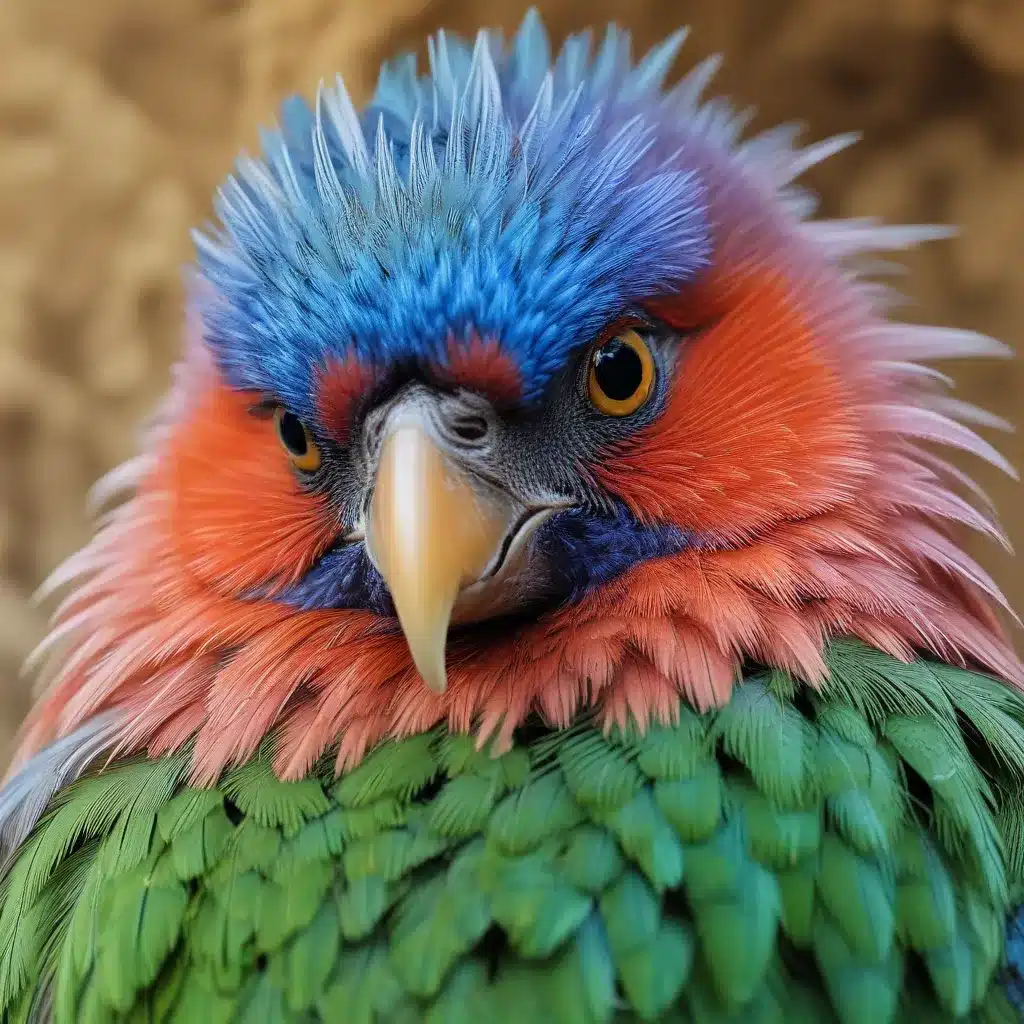
As an experienced avian caretaker, I’ve had the privilege of working with a wide variety of bird species in captive settings. One of the most fascinating aspects of this field is understanding the intricate relationship between a bird’s behavior, physiology, and the health of its plumage. In this comprehensive guide, we’ll delve into the world of avian feather care, exploring the essential elements needed to maintain vibrant, well-groomed feathers in our captive companions.
Avian Biology and Physiology
Avian Integumentary System
The avian integumentary system, which includes the skin, feathers, and related structures, plays a vital role in a bird’s overall health and well-being. Feathers, in particular, are a remarkable adaptation that serve numerous functions, from insulation and flight to display and communication. Understanding the structure and growth of feathers is key to providing proper care and addressing any issues that may arise.
Feather Structure and Function
Feathers are complex, multi-layered structures composed of a central shaft (rachis) with barbs and barbules that interlock to form the vane. This intricate design allows birds to maintain their aerodynamic capabilities, regulate their body temperature, and engage in essential behaviors like preening and social signaling. Each feather type, from flight feathers to downy plumage, contributes to a bird’s overall fitness and adaptation to its environment.
Molting and Feather Replacement
Molting is a natural and necessary process in which birds regularly shed and replace their feathers. This cyclical event is driven by hormonal changes and environmental cues, and it serves to maintain the health and functionality of the plumage. Understanding the dynamics of molting, such as the timing, patterns, and factors that influence it, is crucial for providing appropriate care and support during this critical period.
Captive Bird Husbandry
Dietary Requirements
Proper nutrition is a cornerstone of avian health, and it plays a significant role in the condition and quality of a bird’s feathers. A balanced diet rich in essential vitamins, minerals, and macronutrients is essential for supporting the growth and maintenance of healthy plumage. By tailoring our captive birds’ diets to their specific needs, we can help ensure their feathers remain vibrant, strong, and well-groomed.
Environmental Factors
The captive environment we provide for our birds can greatly impact the health and appearance of their feathers. Factors such as lighting, temperature, humidity, and air quality all contribute to the birds’ overall well-being and their ability to maintain their plumage. Carefully monitoring and adjusting these environmental conditions can help prevent feather-related issues and promote optimal feather care.
Stress Management
Stress can have a significant detrimental effect on a bird’s feather condition and overall health. Captive birds may face various stressors, from changes in their social dynamics to disruptions in their routine. By implementing effective stress management strategies, such as providing enrichment, minimizing disturbances, and addressing any underlying behavioral or medical concerns, we can help our feathered companions maintain their plumage and overall well-being.
Feather Care and Grooming
Bathing and Preening
Bathing and preening are essential behaviors that birds engage in to maintain the health and appearance of their feathers. Providing appropriate bathing opportunities and encouraging natural preening behaviors can help ensure that our captive birds’ feathers remain well-groomed and in optimal condition.
Preventing Feather Damage
Feather damage can occur due to a variety of factors, from improper housing and handling to feather-plucking behaviors. By understanding the potential causes of feather damage and implementing proactive strategies to mitigate them, we can help our captive birds maintain their beautiful plumage and avoid unnecessary distress.
Addressing Feather Disorders
In some cases, captive birds may develop feather-related disorders, such as feather-picking, feather cysts, or abnormal feather growth. By being vigilant in monitoring our birds’ feather condition and promptly addressing any issues, we can work to resolve these problems and prevent further deterioration of the plumage.
Behavioral Considerations
Natural Behaviors in Captivity
Captive birds may not have the same opportunities to engage in their full range of natural behaviors as their wild counterparts. By understanding the ethology of our avian companions and providing appropriate environmental and social enrichment, we can help them express their natural behaviors, which in turn can contribute to the maintenance of healthy feathers.
Enrichment and Activity
Providing engaging enrichment and encouraging physical activity are essential for the overall well-being of captive birds, including the health of their feathers. From foraging opportunities to interactive toys, we can create an environment that stimulates our birds’ natural curiosities and promotes the maintenance of their plumage.
Social Dynamics and Flock Dynamics
The social dynamics within a captive bird flock can have a significant impact on feather condition. Factors such as dominance hierarchies, aggression, and social bonding can all influence the way birds care for and interact with each other’s feathers. By understanding and managing these social dynamics, we can help foster a harmonious environment that supports the maintenance of healthy plumage.
By delving into the intricate world of avian biology, husbandry, and behavior, we can gain a deeper appreciation for the complex needs of our captive birds and the essential role that feather care plays in their overall health and well-being. Through the implementation of sound avian management practices and a commitment to ongoing learning and observation, we can ensure that our feathered companions thrive and maintain their vibrant, well-groomed plumage. For more information on avian care and the latest developments in the avian community, be sure to visit Mika Birds Farm.


